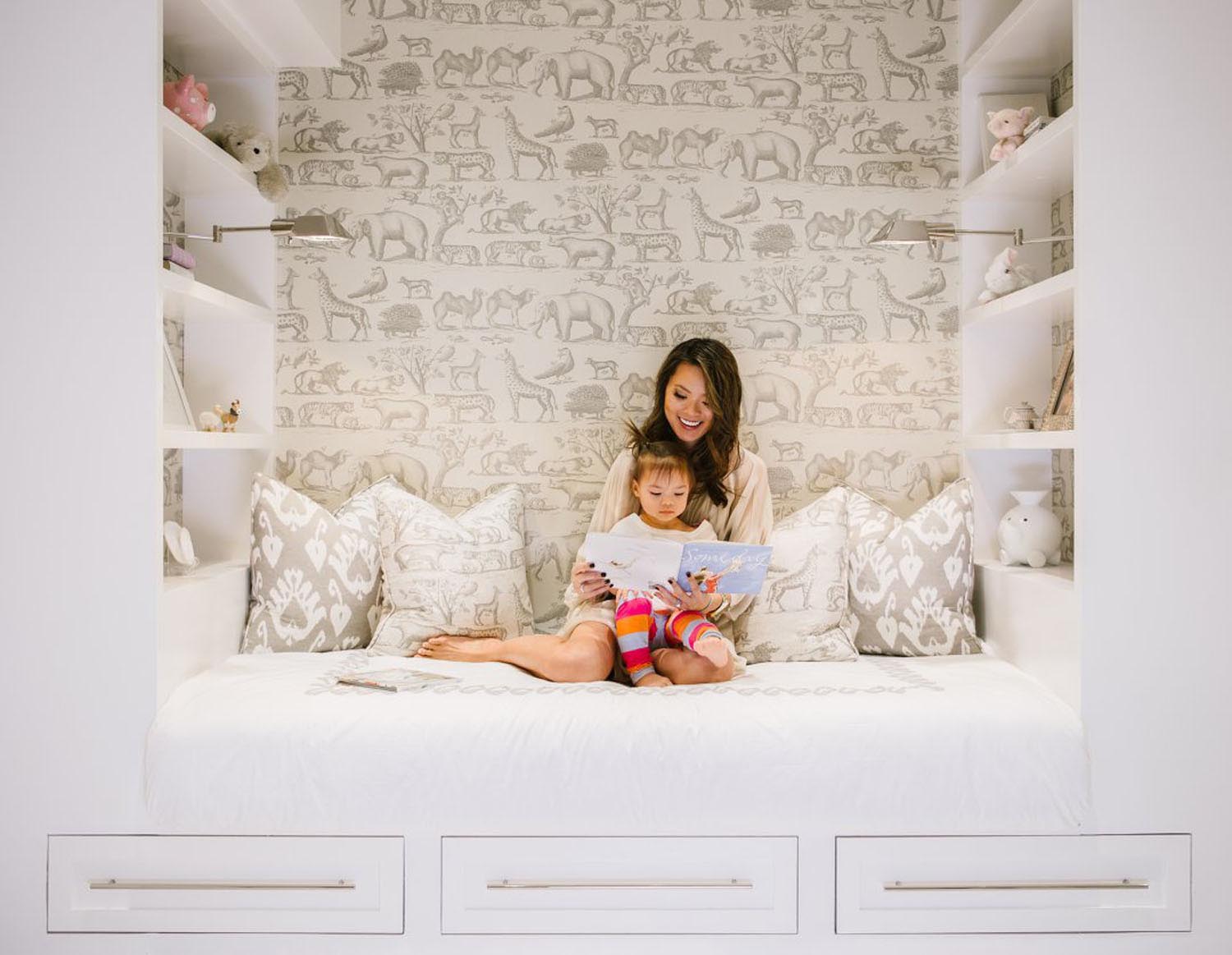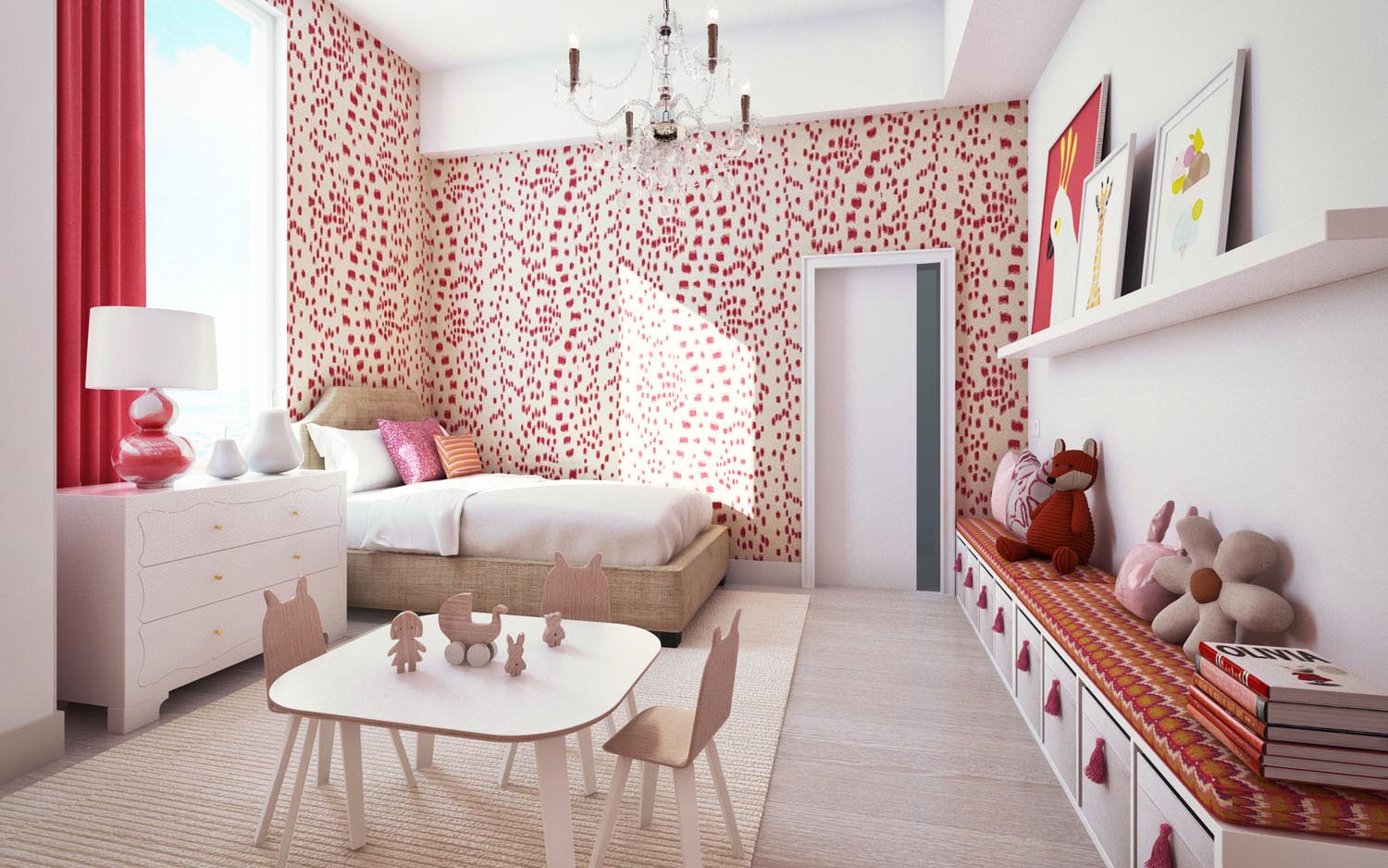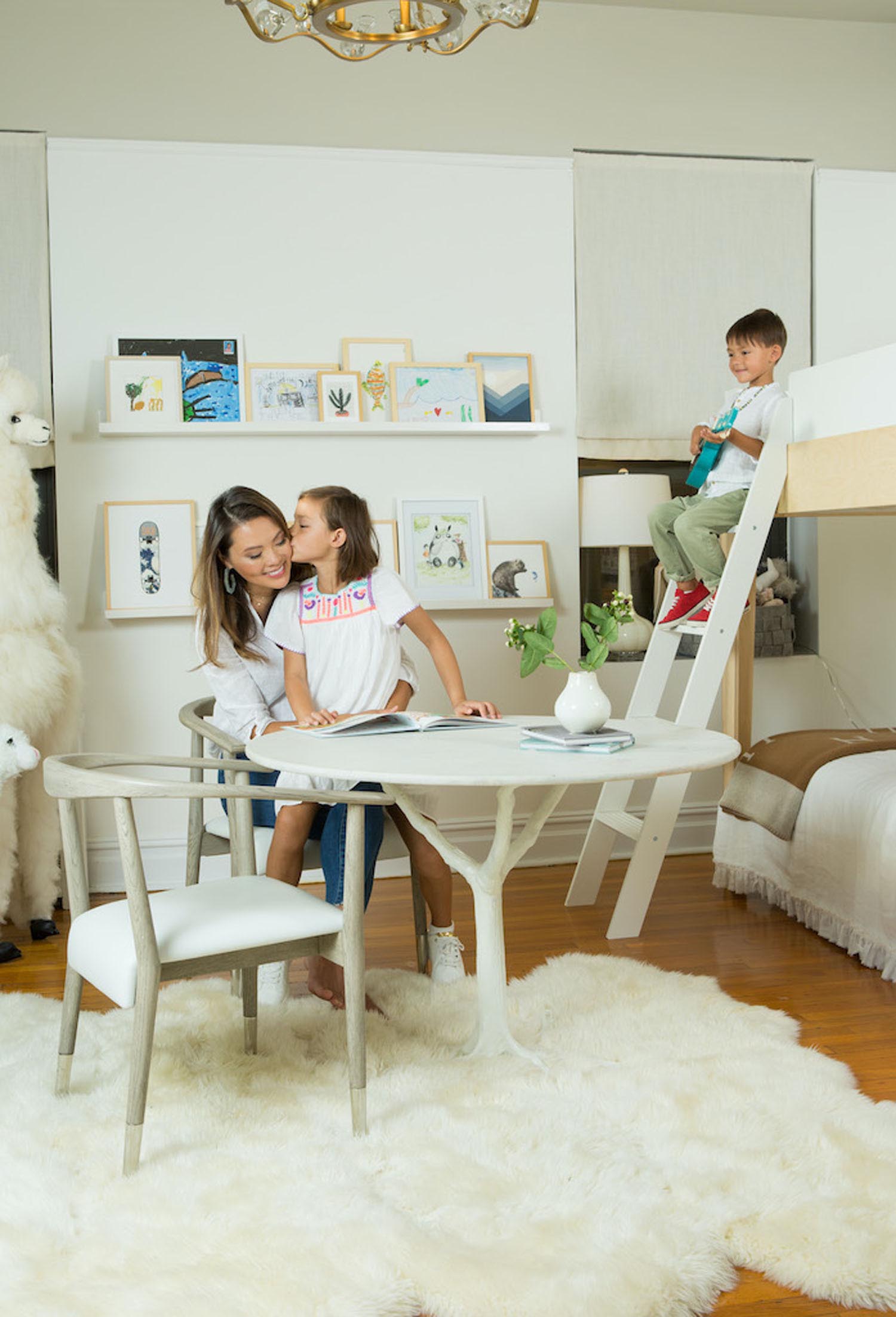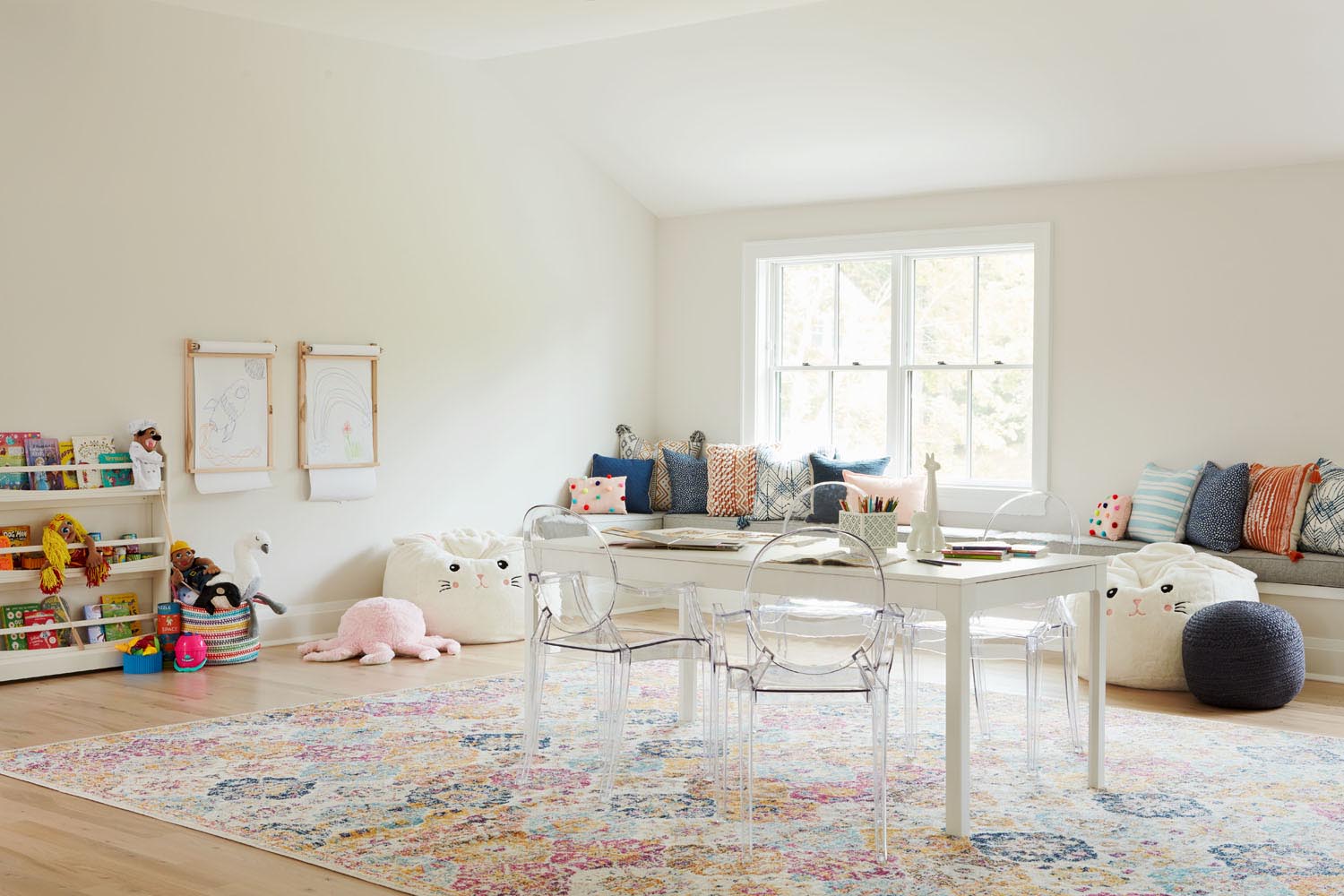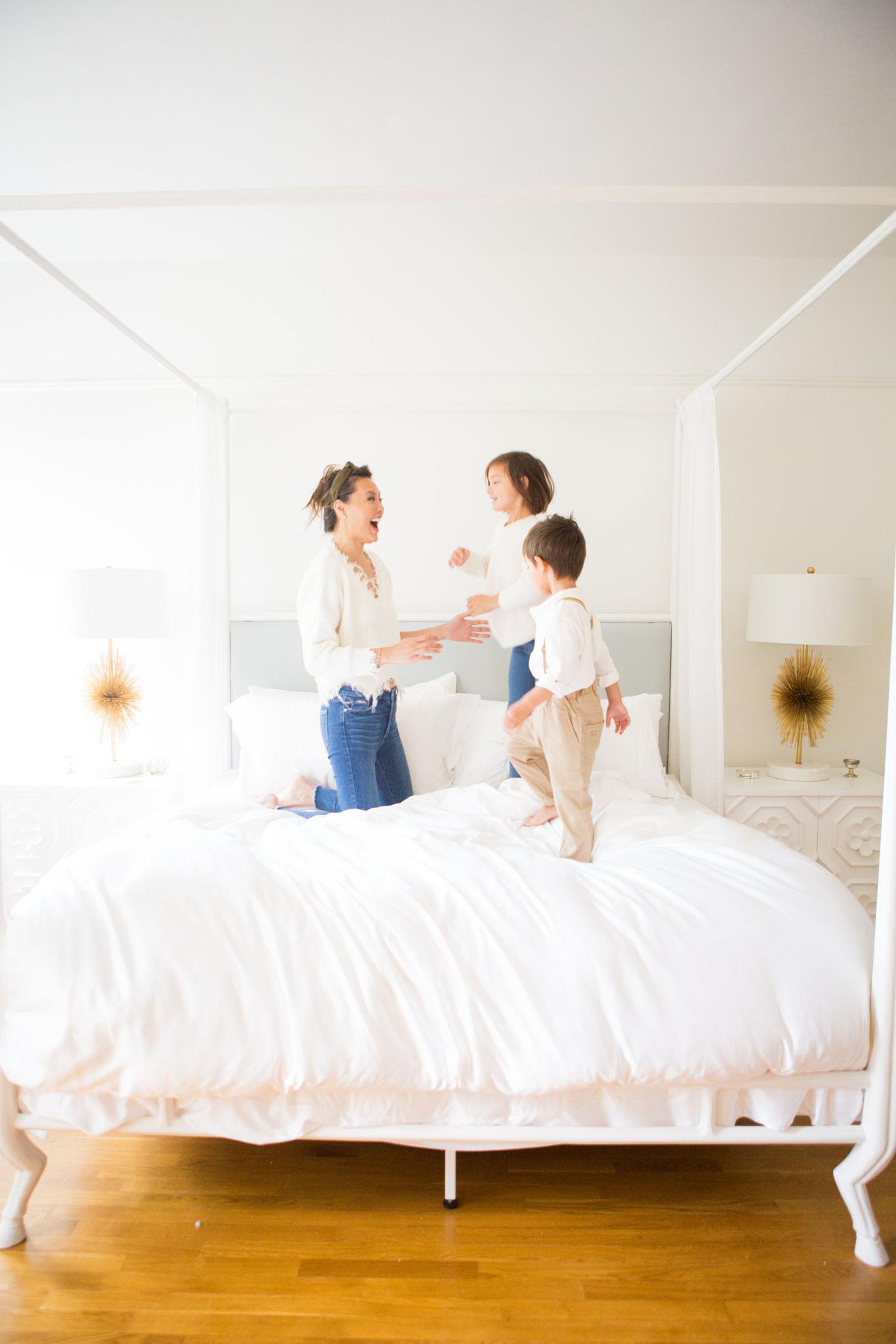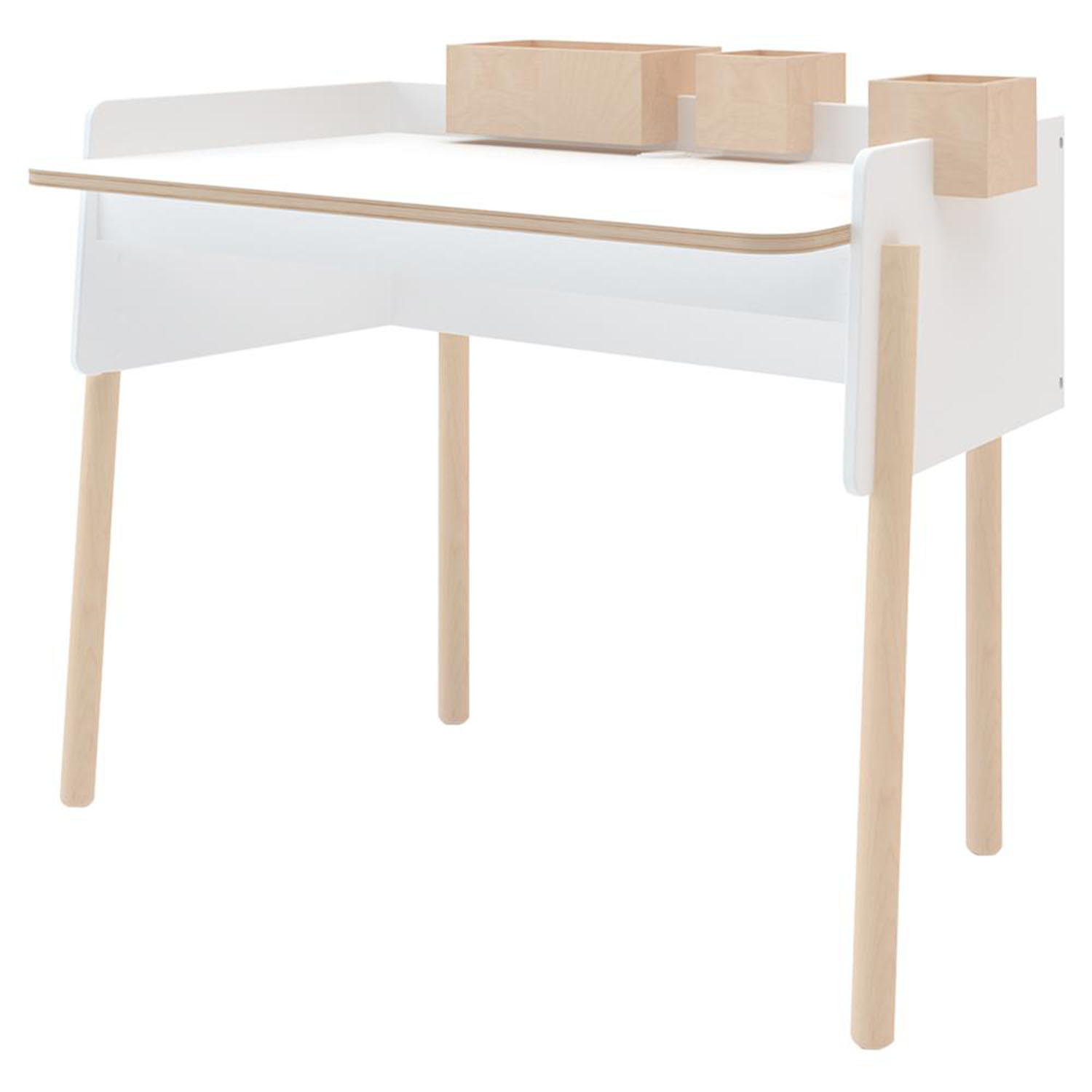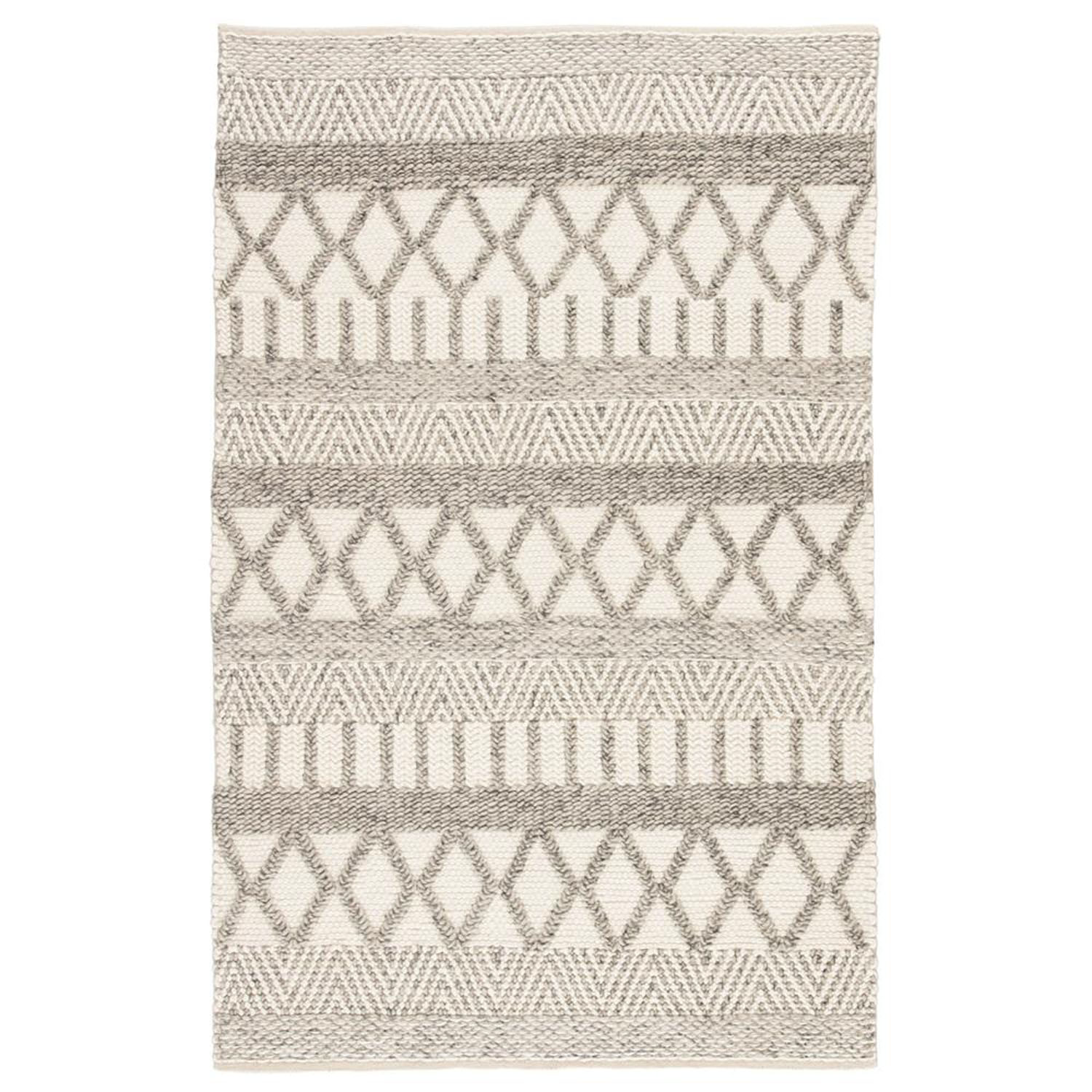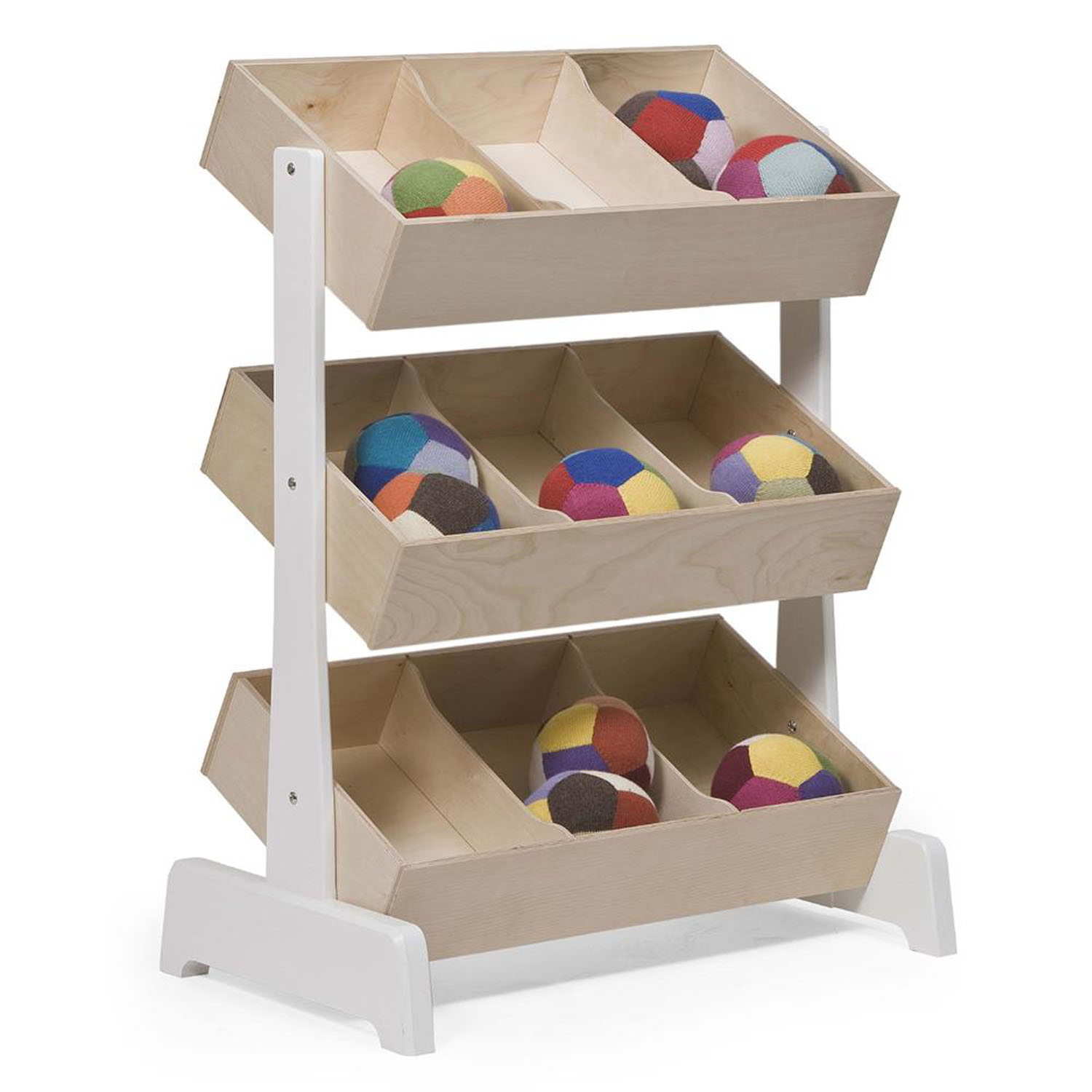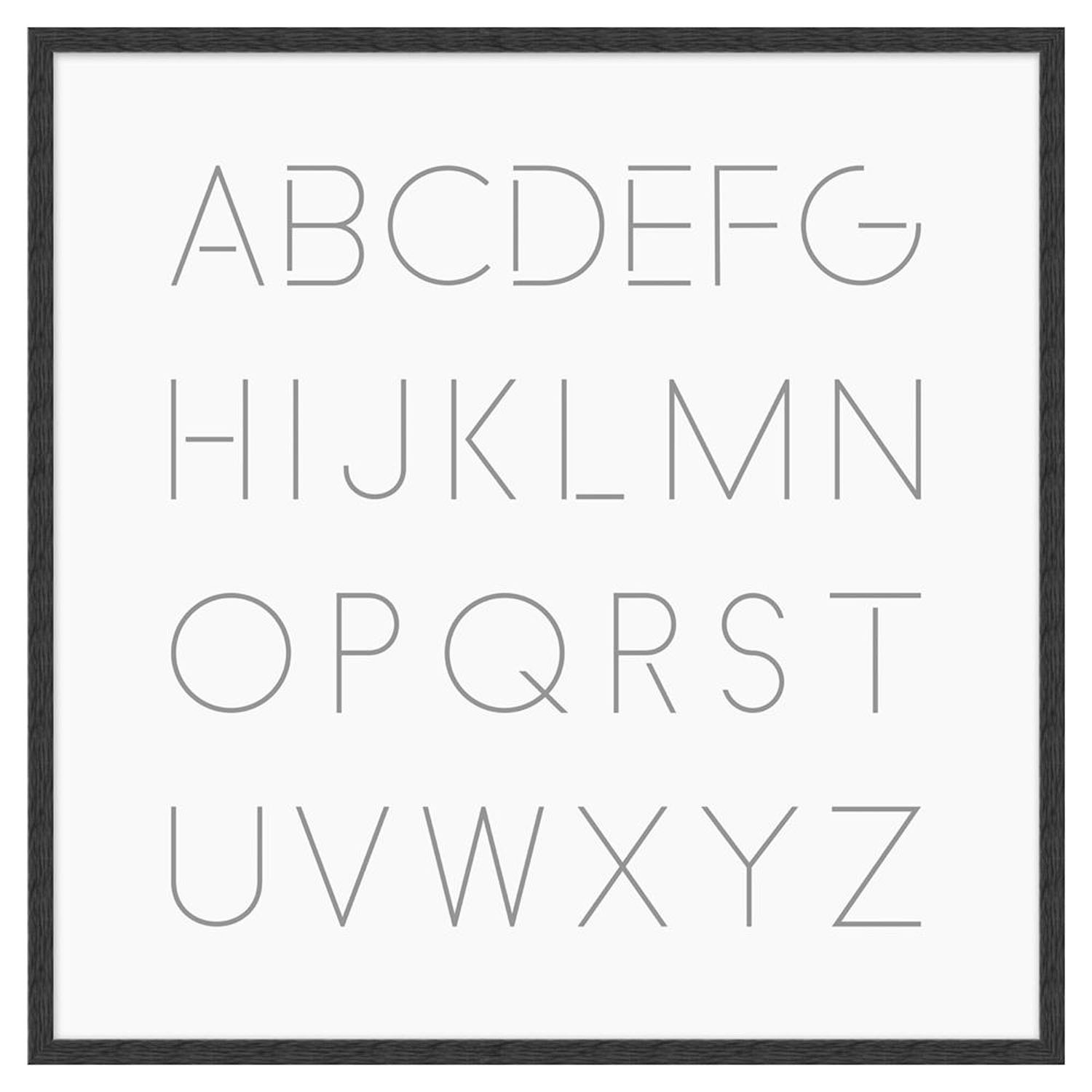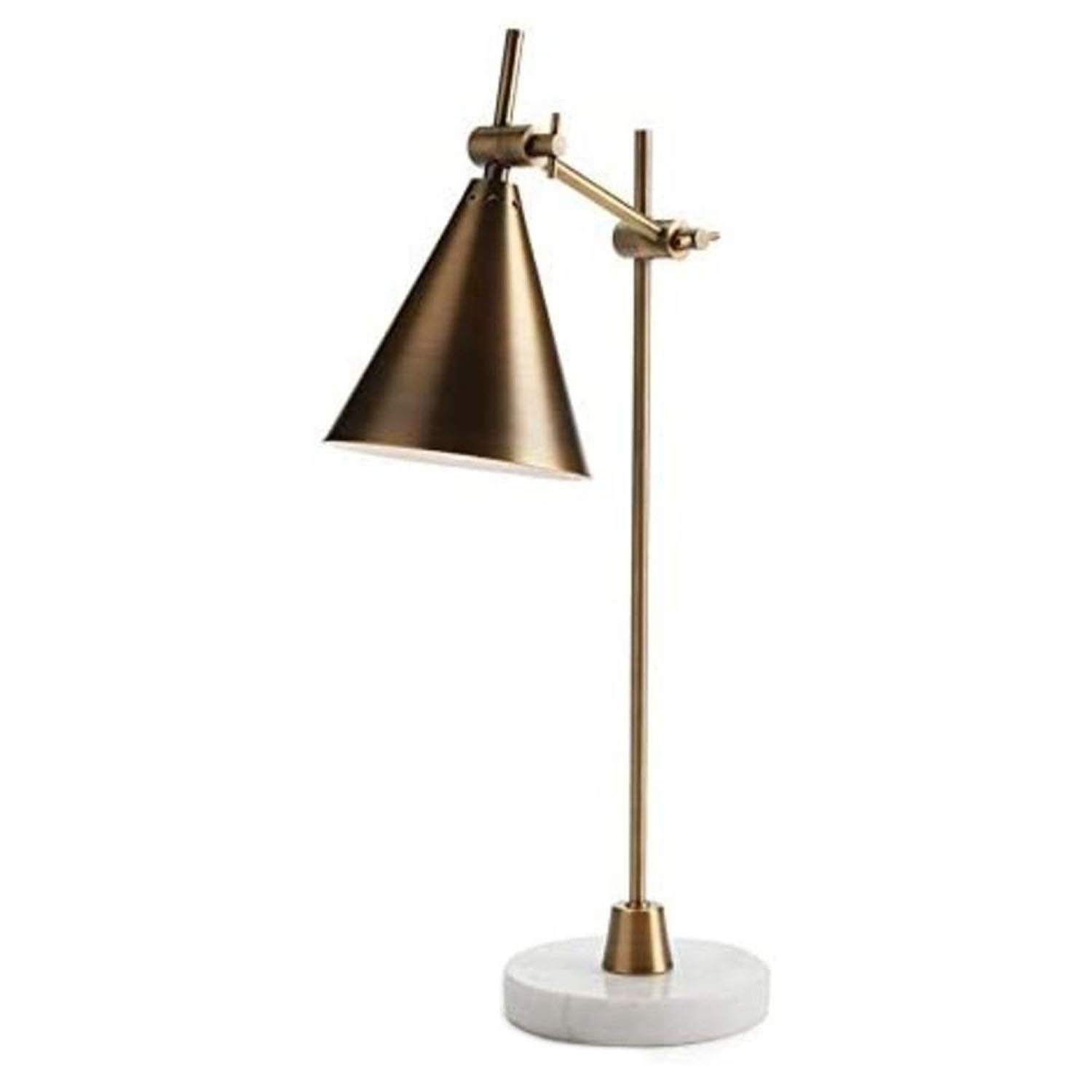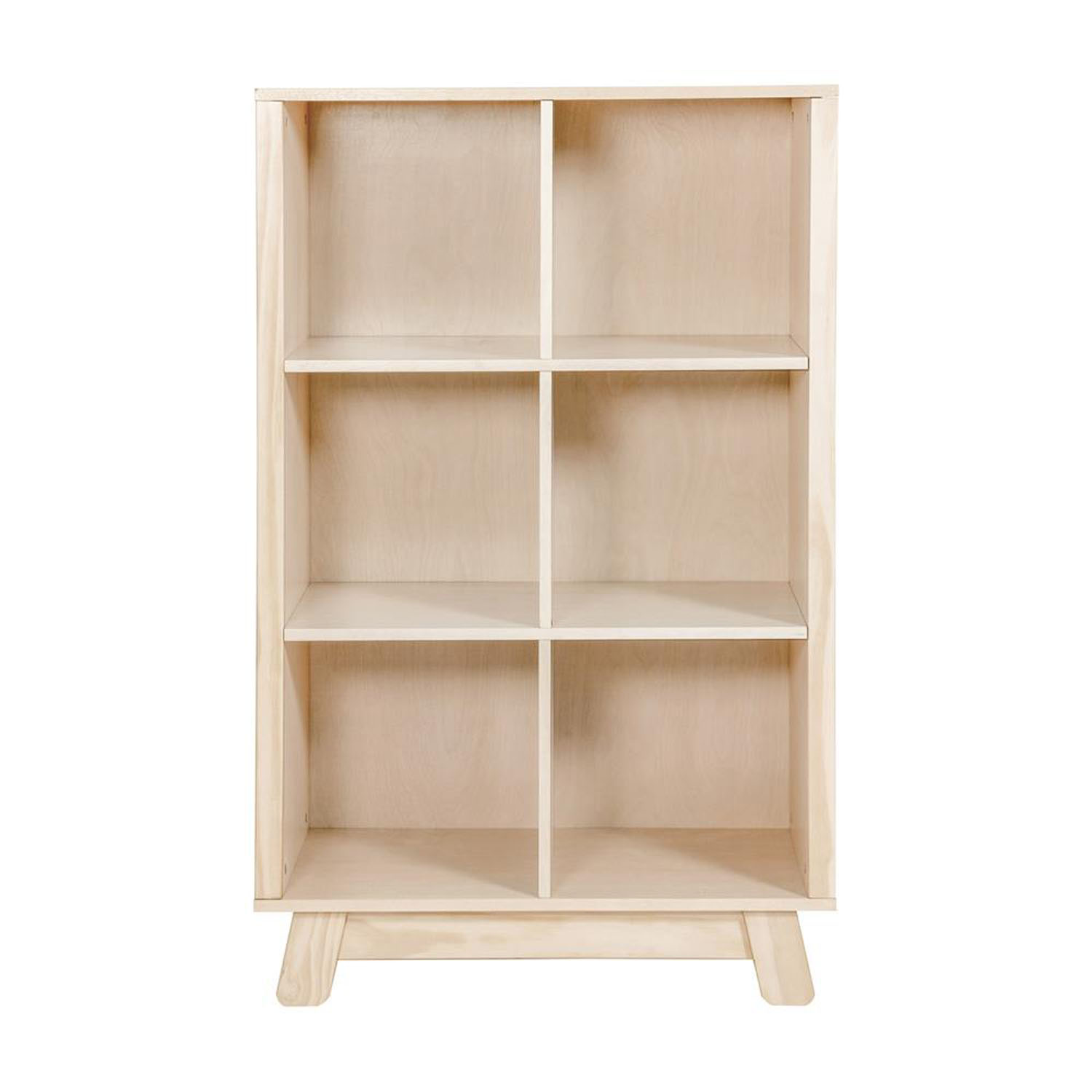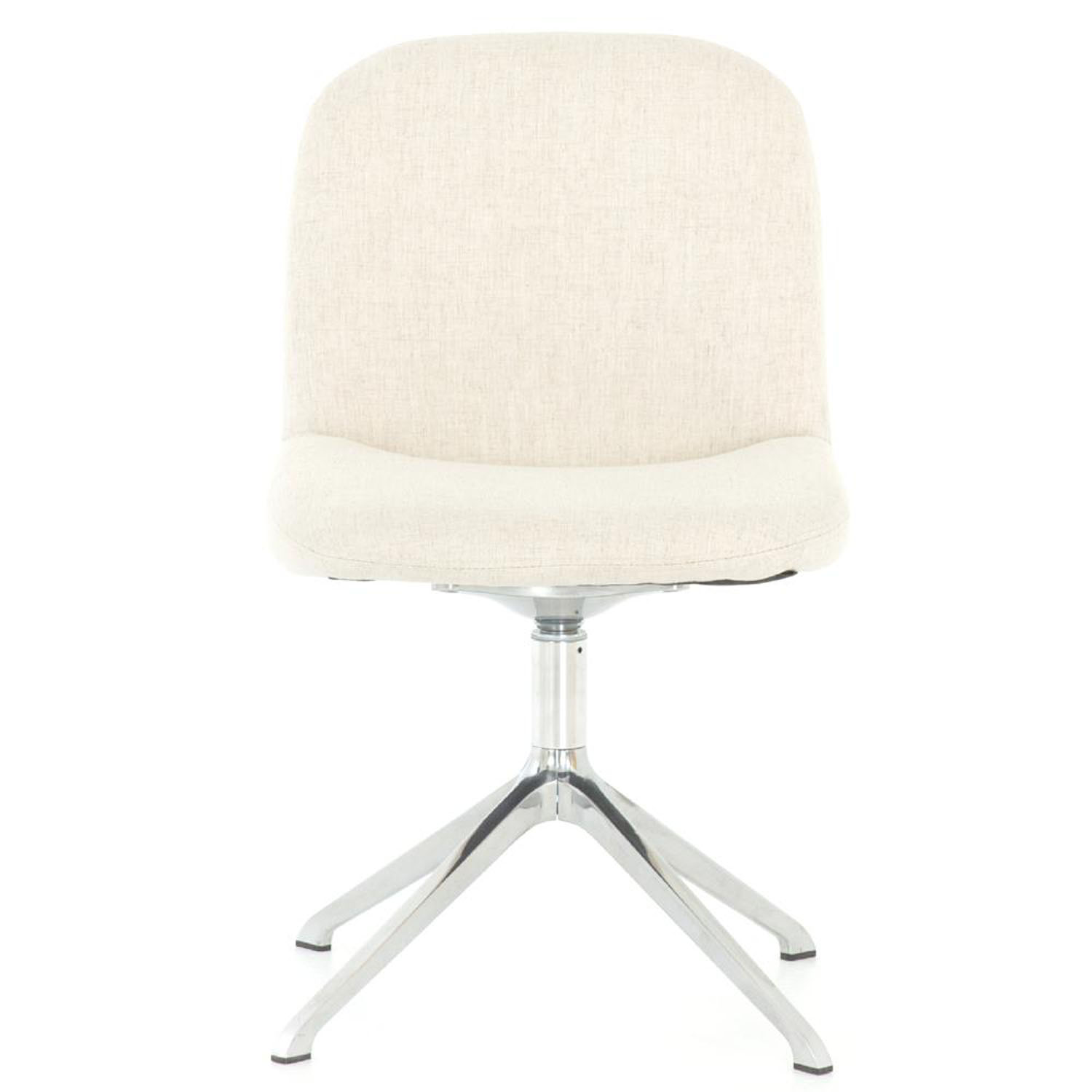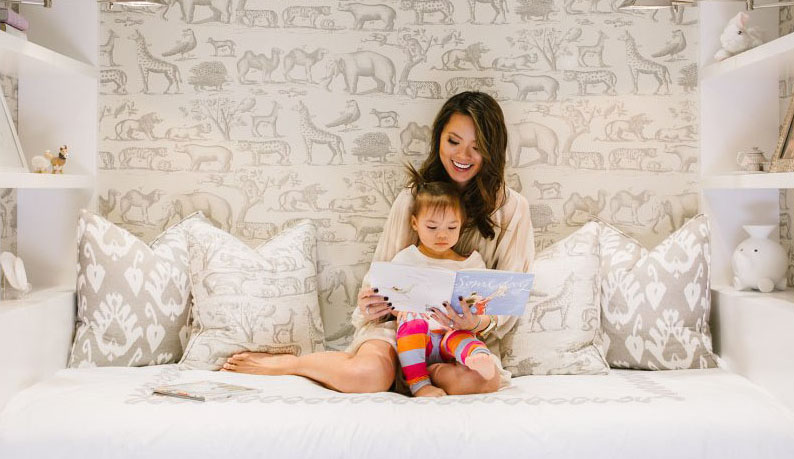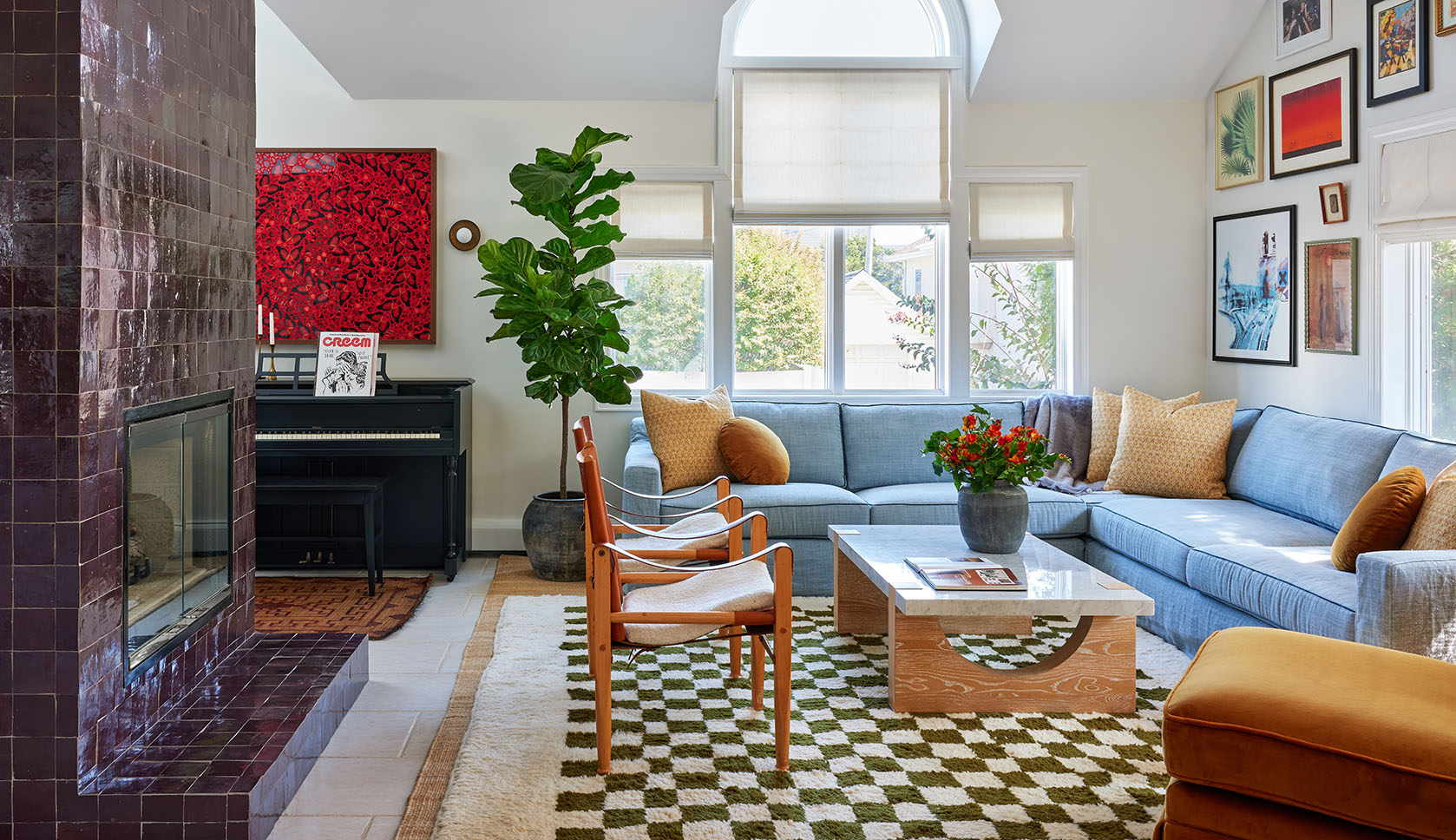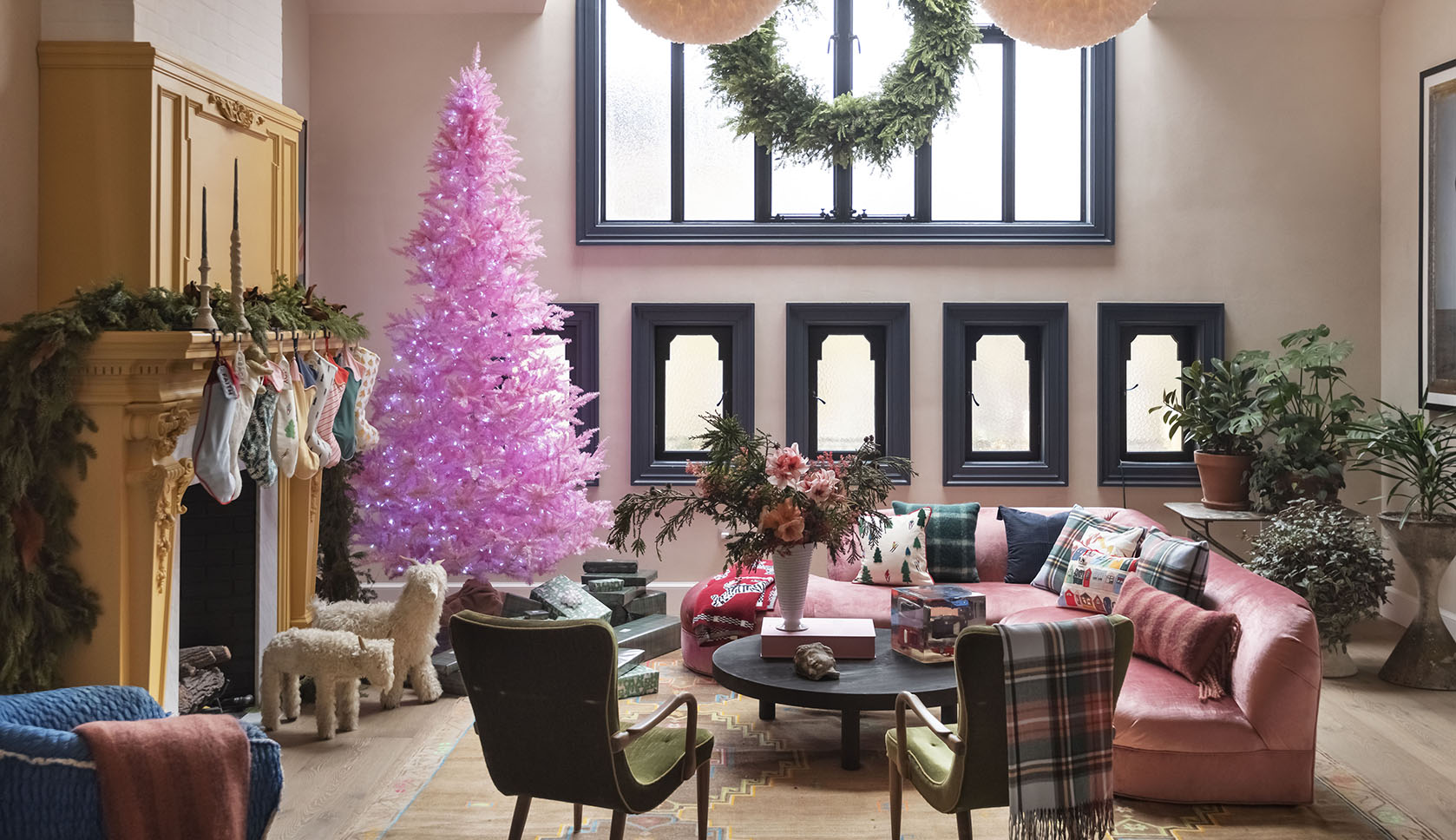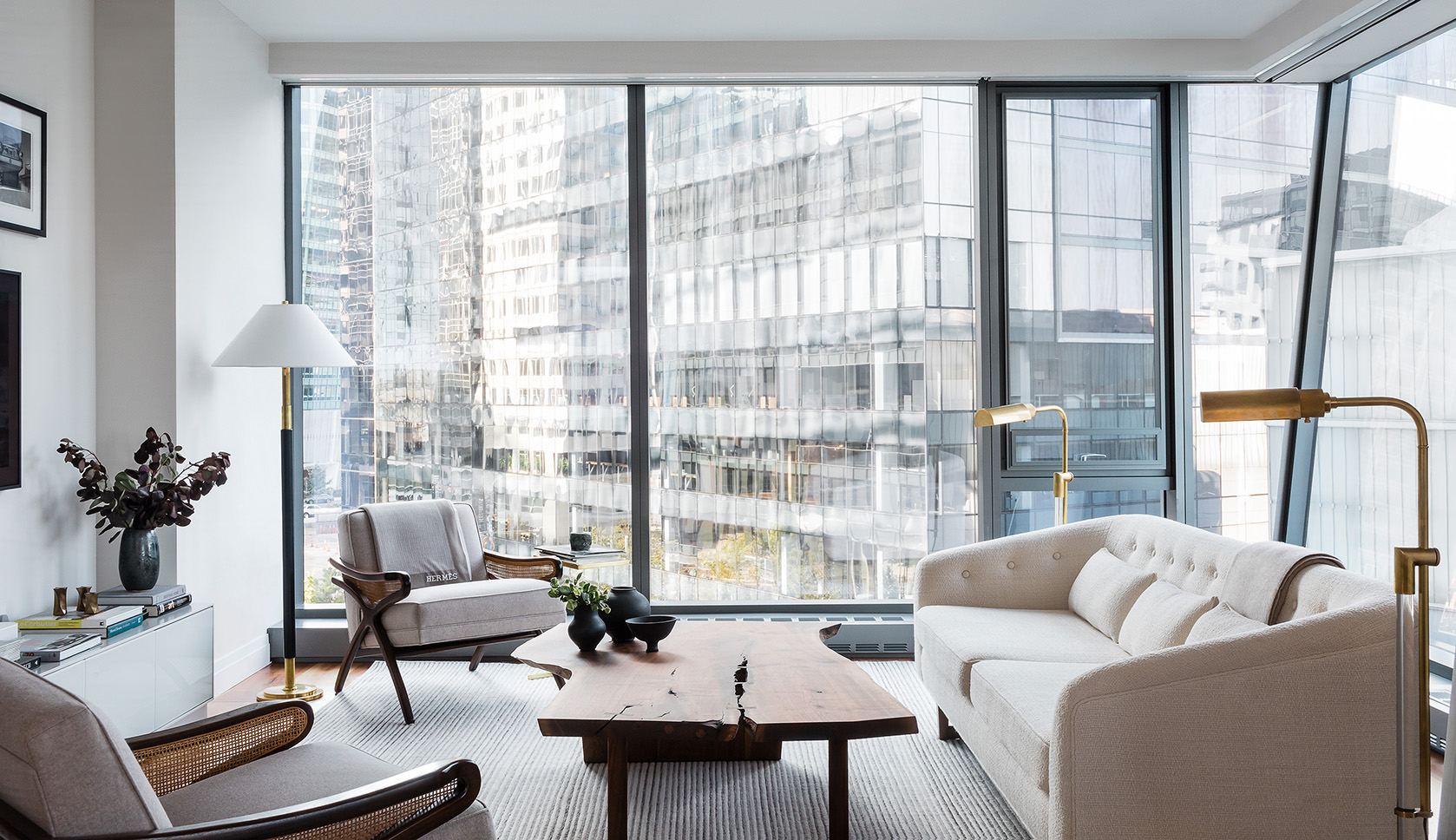Kathy Kuo is a designer, business owner, and busy mother of two. She launched her eponymous online shop, Kathy Kuo Home, in 2012, creating one space for designers and design-lovers to find high-end furniture and home decor. The business has grown to include an in-house interior design firm, dedicated trade program, and ever-evolving product assortment with a style for everyone.
Leaning on her 20+ years of experience, Kathy leapt into action when homeschooling became the norm in 2020. Read on to find out her top tips for creating an at-home schooling space for your kids that will foster both learning AND creativity. Then, shop her selects in the slideshow!
Small Spaces
My kids are younger (8 and 5) and it seems like every class has some form of “arts and crafts” built into the curriculum even if it’s math or science. Therefore I have lots of art and crafts supplies. I mean, have you built a homemade kite or volcano yet? This mama has! And honestly, I really dislike organizing, and am fascinated by folks who “Marie Kondo themselves” since I’m like, who are you, and how can I be more like you? However, art supplies, glue sticks, markers, construction paper, clay… if you’re not organized about it, will end up in a junk box, and if you don’t organize it, then you’ll resent having to go through the junk box and pick through googly eyes, tongue depressors, and glitter attached to everything next time you want to work on a school project.
While I don’t LIKE organizing, I like living in an organized space, so here are some of my hacks. Get furniture that is multi functional and or preferably with storage as well. Art supplies tend to get messy quickly – I like to have all papers in one bin, coloring materials in another, and adhesives in others.
If you love everything in neat baskets like me, I fit smaller leftover cardboard or tin boxes inside the baskets to create mini compartments so that one basket can have 4-5 compartments. This way when you need to get art supplies, you have one basket that houses adhesives, coloring materials, brushes, in separate sections. This also encourages a better clean up routine and they understand how to organize their belongings.
Versatile Product Selection
One storage investment I can’t stress enough is to recreate the cubby or storage area your child might have in their school building. Plus, since routine is so important to young students, the cubby space can be a big part of establishing that for a new type of learning experience.
Similarly, I use a shelving system where I put my kid’s framed artwork and their favorite books – and they love it! They feel so happy anytime I say something they’ve made is going up on the shelf. We continue to rotate things there and it allows them to be surrounded by their own artwork and their achievements that they’ve created.
If you involve your kids when designing their learning space – whether they help pick out pieces or just see their work on display – they instantly feel more connected to the environment.
Refreshing the Space
Even though this space is focused around your child’s learning, it doesn’t mean it shouldn’t be fun! When I refreshed my children’s space I added giant toy alpacas as the central focus of the room. It keeps the space youthful and makes it a place they want to be when you incorporate a fun toy or statement piece that grabs their attention. Small touches like a fluffy rug also make the space cozy while giving it a clean and whimsical look.
Another important aspect when refreshing the space is choosing the right desk and chair. Sturdy furniture is crucial when it comes to long term benefits for kids and helping them sit while learning remote. Whether you prefer a desk or learning table – children need to have a home base where they can comfortably sit, learn and complete their work.
Play Space VS. Learning Space
Consistency is absolutely essential when it comes to creating a productive learning space for your kids. It doesn’t matter where they settle – in their own room or in the dining room – but it has to be the same every single day.
It also helps to have the designated school space be somewhat distinct from their primary play and rest areas. Communicating to kids that different spaces are dedicated to learning versus play, motivates them to focus on school before they can recharge in a different setting.
If you’re lucky to have the space in your home, try creating different “learning stations” for your kids like “Reading corner, craft corner, exercise / gym area”, which will help promote creativity and gives kids a change of pace and scenery – which is extremely beneficial during these times of learning from home.
Lastly, don’t set up your learning space near a TV or around other loud distracting siblings if possible. Even the sight of a TV, or another computer / device may distract your child from being focused on their home schooling.
Lighting & Accessories
When designing a learning space it is important to eliminate the number of distractions – but there are still accessories that can be added to help foster learning. Investing in fun items that reflect your child’s personality also help them feel more at one with the space – it gives them a sense of belonging and authority.
Adequate lighting is key when configuring a child’s work zone as well. If there is not enough natural light in the room, desk and floor lamps are a great way to brighten up the space.
Quick additions like wall art or desk accessories can easily bring the space together and give children a feeling of being back in their classroom.
